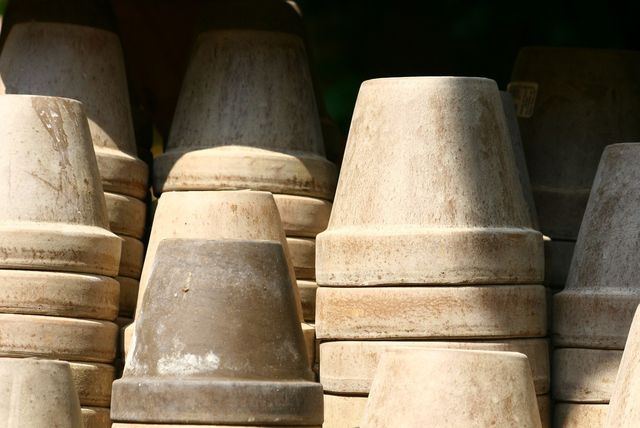The aromatic sage is one of the most popular spice and medicinal plants. Learn here how you can plant sage – in the garden or in a pot.
Sage does good and has a pleasant arome. Depending on the variety, it forms handsome pink-white flowers. Reason enough to grow it yourself in your own garden or in a pot on the balcony.
Contents
Planting sage in the garden

Location
As a Mediterranean herb, sage likes a full sun to sunny location. It should be as warm as possible and protected from the wind. The soil may be moderately dry and preferably calcareous and loamy. Stony soil also pleases the sage.
Sowing time
From the end of April to the beginning of May, you can sow sage seeds directly in the bed.
If you want to preplant sage, you can start from mid/late February.
Planting sage
You can plant sage by either sowing the seeds directly into the field or by preplanting plants and then placing them in the bed.
Direct seeding:
The best way to plant sage is to plant the seeds directly in the open ground.
Loosen the soil beforehand so that the soil becomes fine crumbly. Then add some compost to the soil.
Plant the seeds 1.5 cm deep and 30 cm apart from each other.
Over the next seven to 21 days, the seeds will germinate. During this time you should keep the soil well moist.
Preplanting and planting:
You can preplant sage seeds in a seed container on the windowsill.
Fill the container with a compost-sand mixture and add the previously soaked seeds to the soil.
Cover the seeds with soil to a height of about 1 cm and moisten them well.
After seven to 21 days the seeds will germinate.
After germination, you should place the seedlings in a slightly colder place.
From the middle of May you can plant the seedlings outdoors.
Before that, prepare the soil (loosen it and mix in compost).
Plant the plants as deep as they were in the seed pot. Again, keep enough space between each plant.
Water them well afterwards.
Planting sage in a pot

Care sage in the garden and pot
Pruning:
As a classic half-shrub, sage grows woody in the lower part and herbaceous in the upper part. You can cut back the herbaceous part.
Cutting back sage is very important and you should do it from the beginning.
Cut off new shoot tips, this will encourage the growth of the herbaceous parts of the plant (from mid-May).
Keep cutting back entire branches as they continue to grow (from the end of May).
Be careful not to cut into the woody, lower part of the half-shrub.
The sage tolerates permanent pruning better than a radical complete pruning.
Mid-August should be the last time you prune the sage back.
Repotting:
Sage in a pot needs to be repotted every year.
You should renew the substrate.
Choose a slightly larger pot each year.
Do not forget to put drainage (shards of clay or pebbles at the bottom of the pot).
After repotting, the sage needs plenty of water for the first few days.
The optimal time to repot is in the spring, before it sprouts for the first time.
Although sage is hardy, it should be protected from frost. Put brushwood or pine branches on the soil around the plants in the bed.
If your sage is in a pot on the balcony, you need to pay a little more attention:
Place the pot on a wooden board close to the house wall. You should wrap the pot with jute bags or fleece. You should also protect the sage from above with an appropriate cover.
Sage survives cold but short frosts very well. If these persist, it can be overwintered for a short time in a cool, not too bright room. However, it should be returned to the outdoors as soon as possible.
Good to know
Sage is a member of the labiates family and a herb native to the Mediterranean region, but now found almost worldwide. The sage genus includes 850 to 900 species, including many that have long been used as medicinal plants and kitchen spices.
Naturopathy values the herb for its anti-inflammatory and antibacterial effects. That is why sage tea is often used for colds. It is also said to have an antiperspirant effect. In the kitchen, sage is indispensable for Mediterranean dishes. The herb is very aromatic and tastes spicy-bitter. It goes well with both hearty meat dishes and vegetable dishes.

